The cost of a horse isn’t just about the buying price. You have to consider food, housing, breeding, maintenance, and vet expenses. As of March 2022, you might spend anything from $100 to $250,000 for your equine companion. This price range is driven by the age, gender, pedigree, and purpose of your pony. So if you want the cheapest horse breeds, check this out.
First, you can consider adopting a mustang. The US government will pay you up to $1,000 per horse, so you’re essentially getting the horse for free and making money in the process! Second, you could catch and break a mustang yourself, if you have the skills. But you need state permission to do this, so check with your local authorities before you grab that lasso.
Out West, you can win a free horse at a fair or raffle, so that’s essentially the cost of your raffle ticket or the price of entry to the festival. Another tactic to buying cheap horses is to get one that’s a mixed breed, has low-grade markings, or has a questionable pedigree. Outside these caveats, certain horse breeds are cheaper than others. So let’s explore the cheapest breeds.
Cheapest horse breed
1. Mustangs
We’ve mentioned that mustangs can be caught in the wild, as long as you have a license from nearby wildlife authorities. Some private ranchers will also allow mustang hunting on their farms. These cowboys can train you on how to safely catch these feral horses, and it can be an exciting sport. It’s an option that doesn’t hurt the horses, though it stresses them out.
Alternatively, you can buy a mustang from the government. They routinely have rescue programs where you can buy the horse for around $25, and sometime in 2020, you could buy a Devil’s Garden horse for as little as a dollar! But while the purchase may be affordable, you’ll need to see if you can manage the costs associated with owning a cheap horse breed.
Their pedigree is lower so they may have more health issues. And horses eat a lot. On average, you’ll spend $200 to $300 per month if the horse lives on your land. If you choose to keep the horse at a commercial stable, you’ll have to pay for food, accommodation, and daily care. That’s $260 to $600 per month plus your gas as you drive to visit your pony.
As you shop for a cheap mustang, don’t just focus on color. Inspect the horse to see whether s/he’s healthy and spend some time with the mustang to see if your personality matches. You can also ask your vet which mustang bred best suits your needs. For example, mountain mustangs can ride long and hard but are testy. Kigers are friendlier and more manageable.
2. Rescues
Rescue horses can be anything from illegal imports to injured racehorses. So while the breed varies, it’s more important to check the status of the horse. A rescued racehorse might be repurposed as a dressage horse or jumper, but may need expensive supplements to keep up.
On the other hand, a rescued mustang might be so traumatized by its previous treatment that it may never warm up to you. Also, depending on where the horse was saved, it may not have the temperament or capacity to survive in your local climate, so be careful as you shop.
You can find a rescue horse at the local shelter or SPCA. You can also check horse abattoirs. This feels like a gruesome space to shop for horses, but these death-row-equines can sometimes be worth the trip, and the staff may let the live horse go for a few hundred dollars.
3. Quarter Horse
What makes Quarter horses the cheapest horse breed? Well, they’re typically a mix of four horse breeds – Arabian horses, Native American horses (such as the Chickasaw), mustangs, and thoroughbreds. They can also be a mix of Spanish, Arabian, English, and wild horses.
This mingling of genes and colors makes them a good all-round horse. Quarter horses are bred to be fast, athletic, powerful, slight, and friendly. Their personalities are amenable, but their mixed heritage means they fetch lower prices. And they have a good cow-sense too.
This ability to herd cattle made Quarter horses popular with pilgrims and cowboys. Their official registry began in 1940, and Quarter horses are often sorrel-colored, a light reddish-brown. They’re ideal for beginners because they’re both affordable and easy to work with.
4. Paint Horse
A Paint horse looks exactly as it sounds. Think of a horse colored-in by a kindergartener. They’re often pintos, with large patches of darks and whites. While their color options are diverse, Paint horses are registered by the APHA (American Paint Horse Association).
You’ll probably rush to pick the prettiest pattern, but check the health of the horse too. These horses descend from spotted thoroughbreds and quarter horses, so they’re powerful but personable. Their spot patterns include overo, tobiano, sabino, tovero, frame, and splash.
Registered paint horses are fine, but unregistered ones can fetch lower prices. And while they form the second-largest breed after Quarter horses, you must know the horses’ parents. At least one has to be registered by APHA or AQHA (American Quarter Horse Association.
5. Appaloosa
Do Dalmatian horses exist? Well, sort of. But they’re called Appaloosas and are sometimes crossed with Tennessee Walking horses to make Walkaloosas. Some of us consider their spots cute but horse snobs call them ugly. It’s why they’re among the cheapest horse breeds.
These indigenous horses originate from Nez Perce Native Americans. They can be partially or wholly spotted with distinct color blocks. And because they were raised within a social culture, Appaloosas are known to be friendly, loyal, sturdy, versatile, and great with kids.
The Nez Perce used their horses to hunt and herd, so they’re surefooted with immense stamina. It’s a low-fuss horse that developed in the savannah so it doesn’t eat as much as pedigrees. It’s the state horse for Idaho, but negative cultural attitudes keep their prices low.
6. Standardbred
Horseracing is popular around the world. But while Europeans love their thoroughbreds and Asians lean towards Arabians, Americans love out Standardbreds. Thoroughbreds are customized for speed and Arabians rely on endurance, but Standardbreds are primed for surefooted agility. They’re raced in harnesses, particularly for champion trotting and pacing.
Like thoroughbreds, retired standardbreds are listed among the cheapest horse breeds. But rather than the punishing sprints of thoroughbreds, standardbreds spend most of their careers springing and jumping, so they face far more pressure and gather ageless injuries.
This means your pocket-friendly standardbred might be too damaged to ride. You can buy them cheap, but they may run up ridiculous vet bills before you can work with them. It’s why so many end up at abattoirs. If you have the patience (and a discount vet), they could work.
7. Miniature Horse
Psychologically, small packages feel cheaper. But as any dollar store buyer can tell you, they end up costing more in the long run. That said, while miniature horses are cute, they’re not particularly practical, which is what settles them into the list of cheapest horse breeds.
They’re not ponies or babies. They’re fully grown horses with small statures. Dwarf horses, so to speak. Their calm, gentle nature and their tiny bodies make them popular ‘ponies’ for kids. And being so little, they eat less food and need less space, making them cheaper to maintain.
Miniature horses are good as emotional support companions aka service animals. They’re helpful for equine therapy and can live longer than regular horses. But kids will soon outgrow them because only toddlers (or petite adults) can comfortably ride them.
8. Thoroughbred
You might confuse the words thoroughbred and purebred, so let’s start by clarifying. A thoroughbred is a racehorse. Its ancestry and genes have been curated to focus on speed, endurance, and temperament because they need to keenly catch the cues of their handlers.
But these racehorses are only in business for a few years. Once they retire, they get sold for meat and by-products. You can also buy one as a light horse for simple farm work, or as a pet. That’s why you can get them cheap, even if they previously won hundreds of derbies.
Depending on how you’ll use the horse, check its health and personality. Frail or injured horses are the cheapest horse breeds, but they may not be strong enough to ride and might cost you more in vet fees. These retirees are listed as OTTB – Off-the-track-Thoroughbred.
9. Arabian
We describe all kinds of horsetails as ponytails. But when you think of that essential hairstyle, the one worn by cheerleaders and spry little girls, you’re thinking of an Arabian horse. They have perky, highly perched tails that shoot up before they flow back down.
And because they’re slight in build and have concave dish-like profiles, they tend to be cheaper. Part of it is the cultural perception and part of it is psychological. They just don’t look how you’d expect American horses to look! Even Abstangs seem strange in comparison.
These horses were bred for racing so they have efficient respiratory systems and legendary endurance. Arabian horses are categorized by their appearance and genes rather than their patterns, so you can find tons of color options. They can be feisty, so you need experience.
10. Crossbred
As a general rule, mixed color horses are the cheapest horse breeds because solid colors are considered premium, and are therefore more expensive. So crossbred horses – whether or not you know their ancestry – can be more cost-effective than their plainer cousins.
Crossbred horses might also have genetic flaws that could lower their purchase price. This assumption makes them cheaper, even when the defects aren’t visible or obvious. The pictured horse is a zebroid – half zebra, half horse. But any half-and-half horse will do.
Because crossbreeding can lead to ‘low-grade’ patterns like roans, mottling, uneven spotting, or even striped, it’s a good starting point when you’re looking for a low-cost horse. And ideally, a crossbred horse is billed lower than a grade horse with a solid or block pattern.
11. Grade
Hundreds of racehorses are bred every year, but not all of them make it to the big leagues. Plus some racehorses aren’t as carefully cultured as the typical thoroughbred. Some were just naturally fast so they got co-opted into the race circuit regardless of their passing pedigree.
Generally, horse rearers keep careful records of each foal’s parentage. But if the horses mated naturally or were inseminated from multiple studs, you can’t directly trace their ancestry. These horses are referred to as grade horses, and they fetch lower prices than purebreds.
Horses with unclear lineage are therefore the cheapest horse breeds. They might have mixed features and markings that aren’t considered aesthetic. But these allegedly ‘ugly, low-quality’ horses can have great personalities, and at least no one will steal your weird-looking filly.
12. Gypsy Vanner
Depending on where you grew up, you may think of gypsies as exotic and mysterious or suspect their lifestyle. But their culture and fashion are beautiful and their horses are equally gorgeous. Gypsy Vanners got their name from their job – puling vardos (gypsy caravans).
Because these horses are indigenous to Romanis, they’re more pocket-friendly than curated horse breeds. They’re big-bodied and stocky, with luxurious manes and feathering on their feet. They’re almost always piebald (black-and-white) or skewbald (brown-and-white).
You can also find tricolored Gypsy Vanners (dun-and-white, meaning the body is brown-and-white while the mane, tail, and feet are black). They have calm, even natures because they’re used to being around large nomadic families with loud kids and vibrant music.
13. Tennessee Walking Horse
Have you watched a horse move? We assume they can all stand, walk, and run, but horses actually have four styles of movement – walking, trotting, cantering, or galloping. These are called natural gaits. But there are two more: pacing and ambling. Not all horses can do these.
Confusingly, a horse that can amble is called a gaited horse. Tennessee Walking Horses are good at this, and you can buy them cheap. Mountain mustangs are good amblers as well. The amble is a four-beat gait that’s fun to watch and practice, and they’re ideal show horses.
So whether you want a trainee horse for your kids and teens or a companion they can play with in the backyard, Tennessee Walking horses are the cheapest horse breed. Retired show horses can fetch a pocket-friendly price so check the local stables, breeders, and dealers.
What’s your top contender for the cheapest horse breed? Give us reasons in the comments!
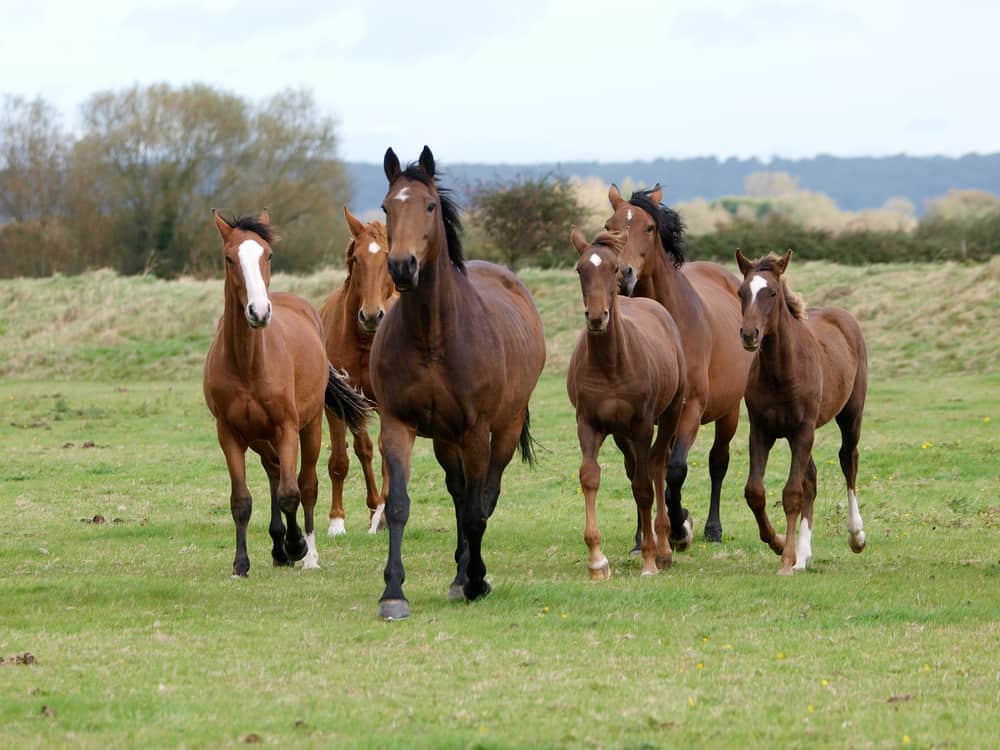
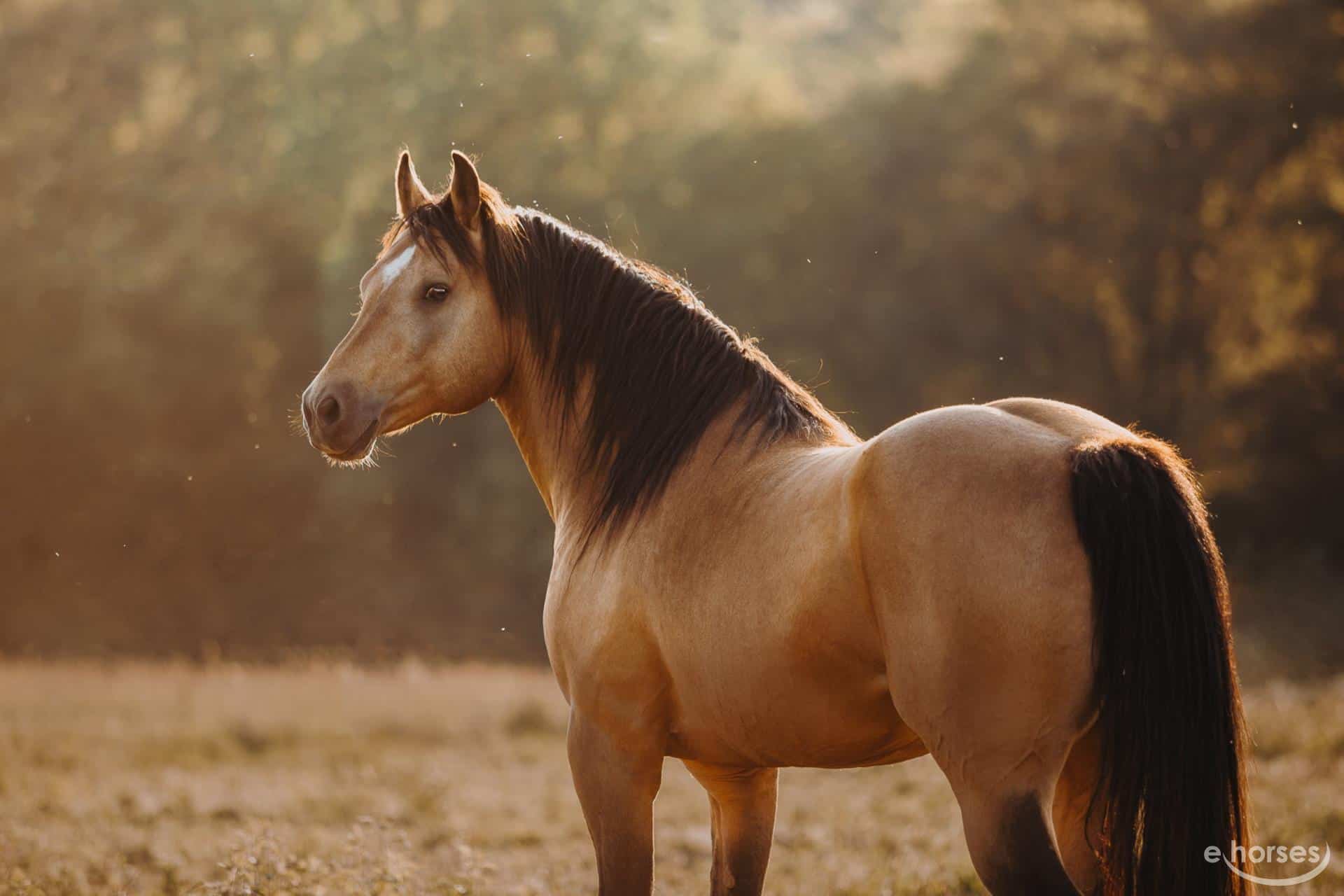
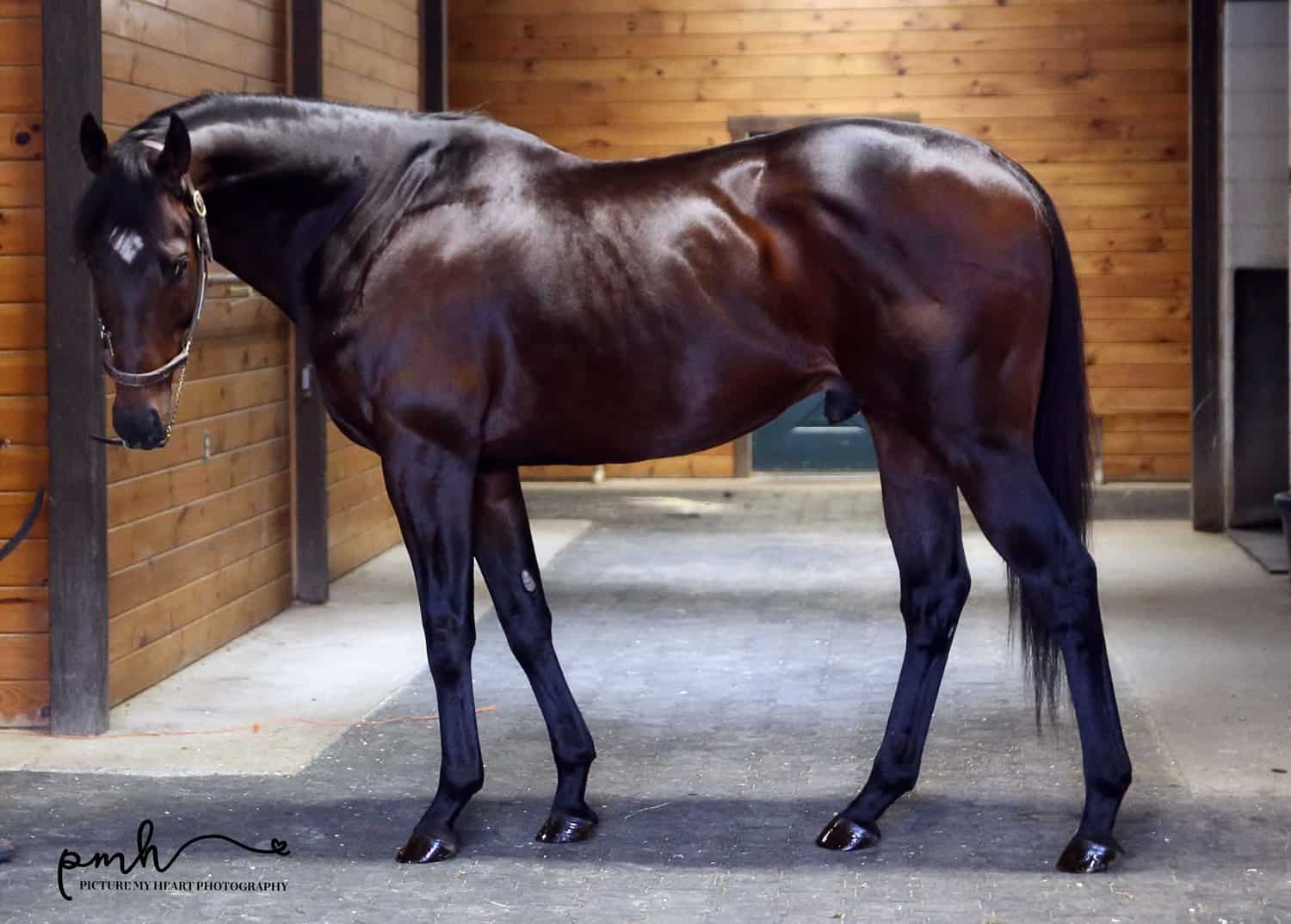
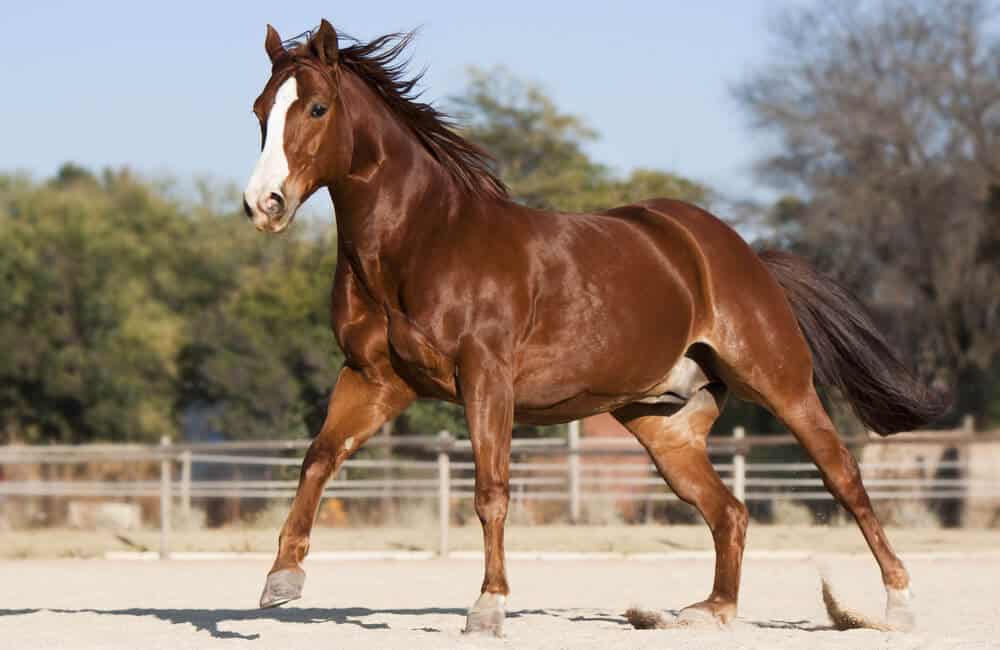
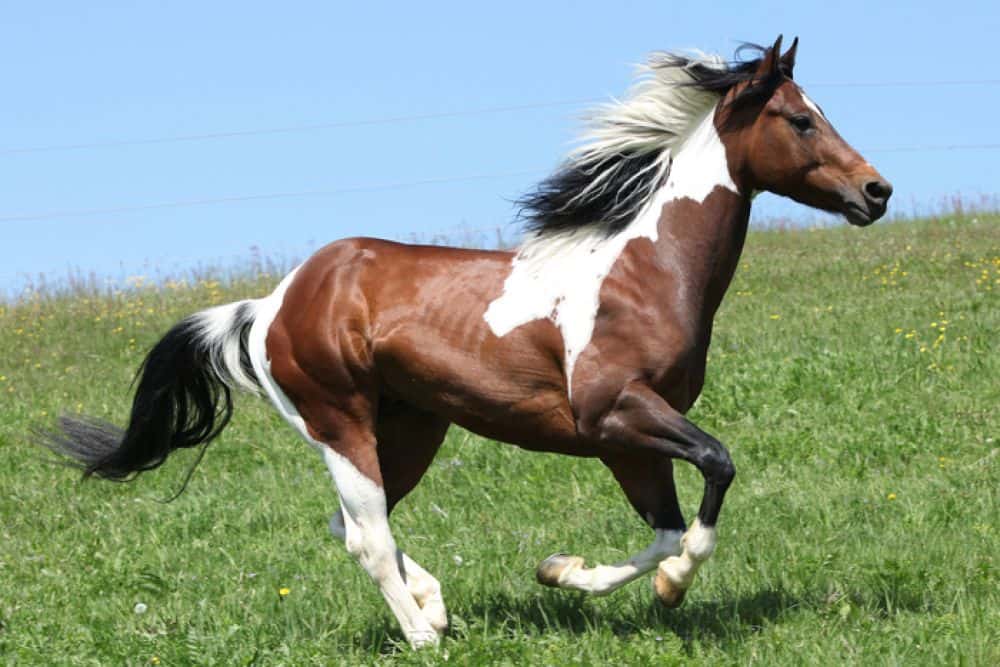
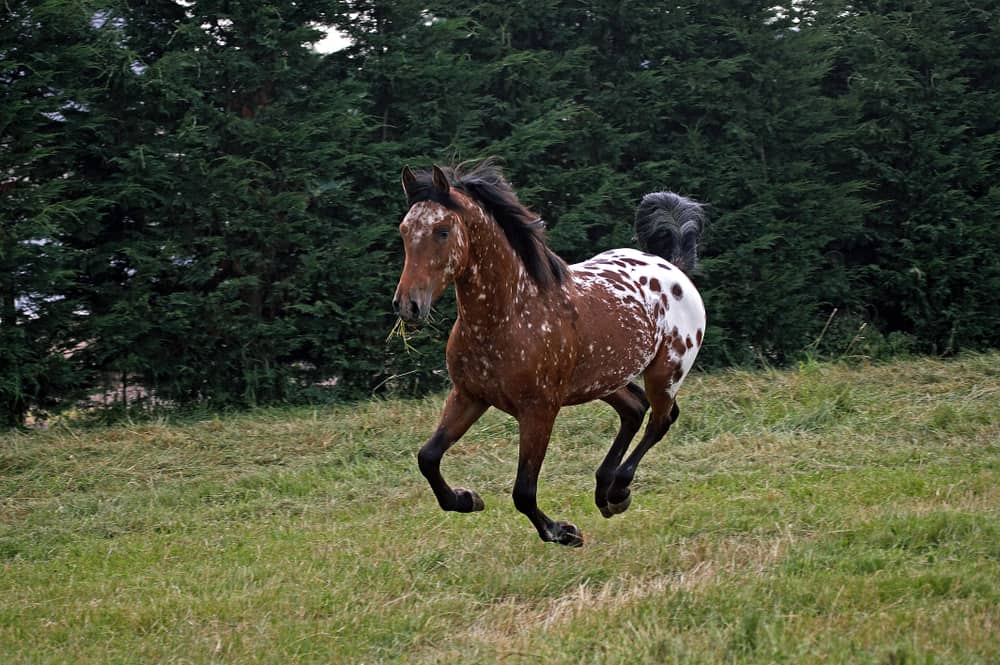
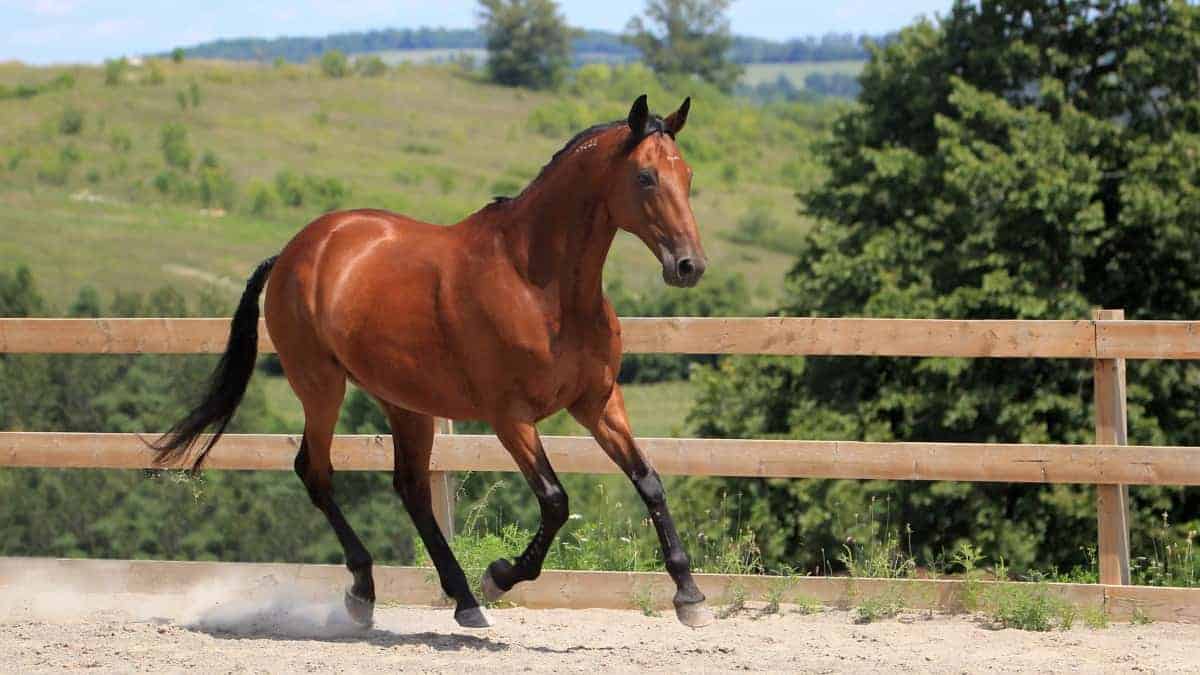
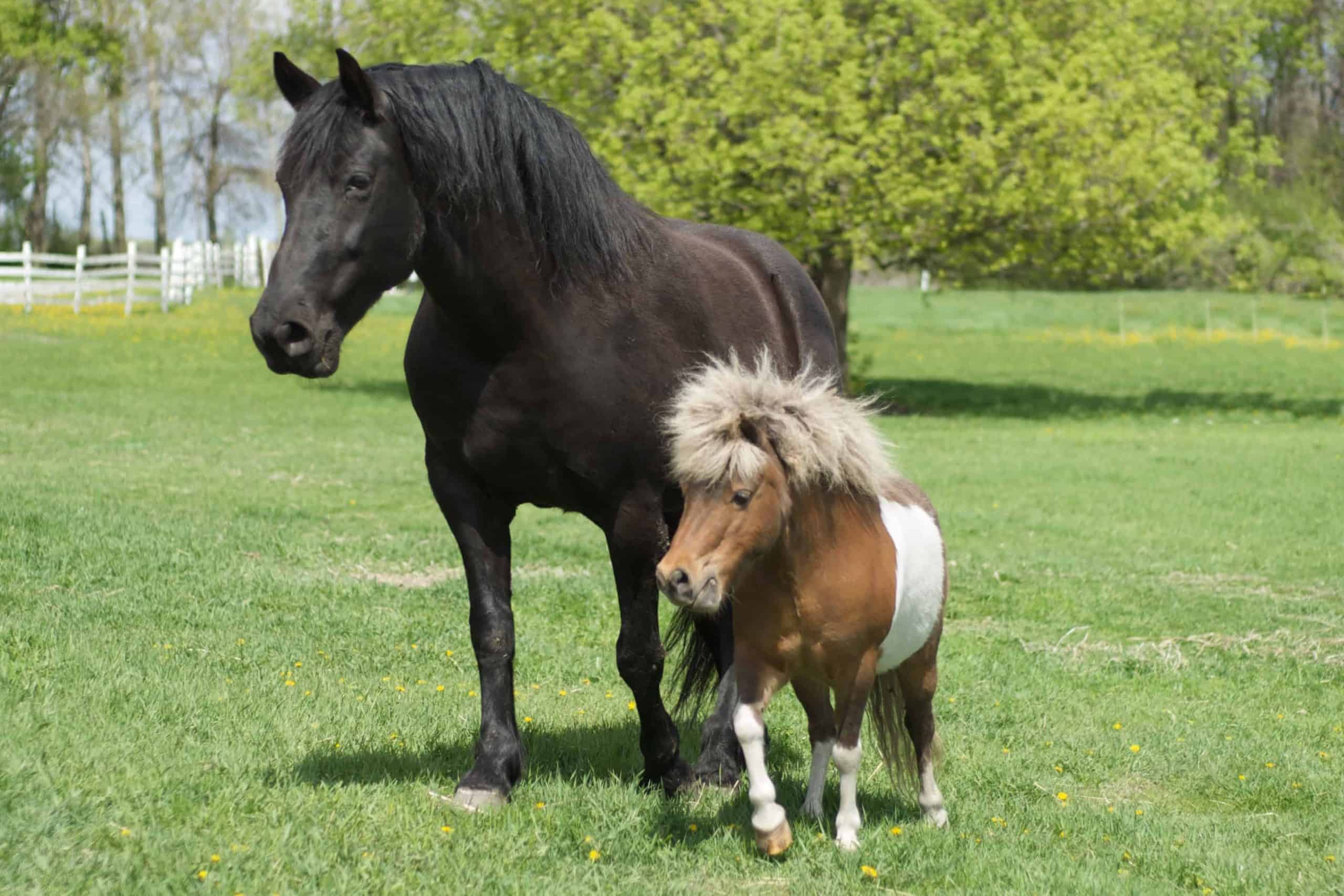
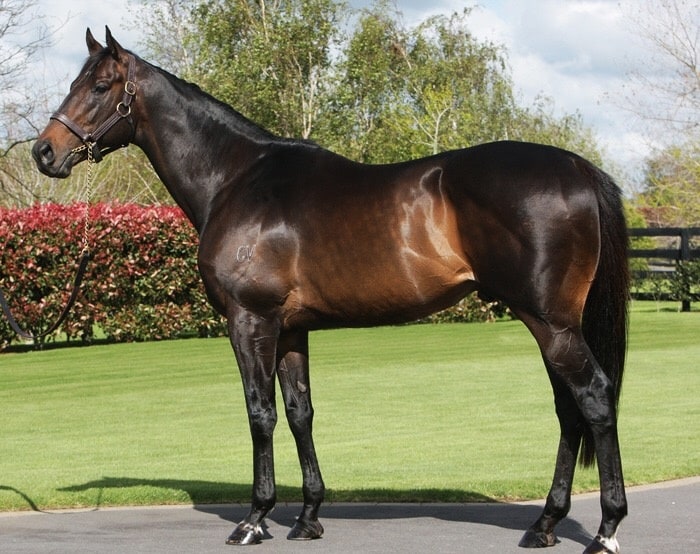
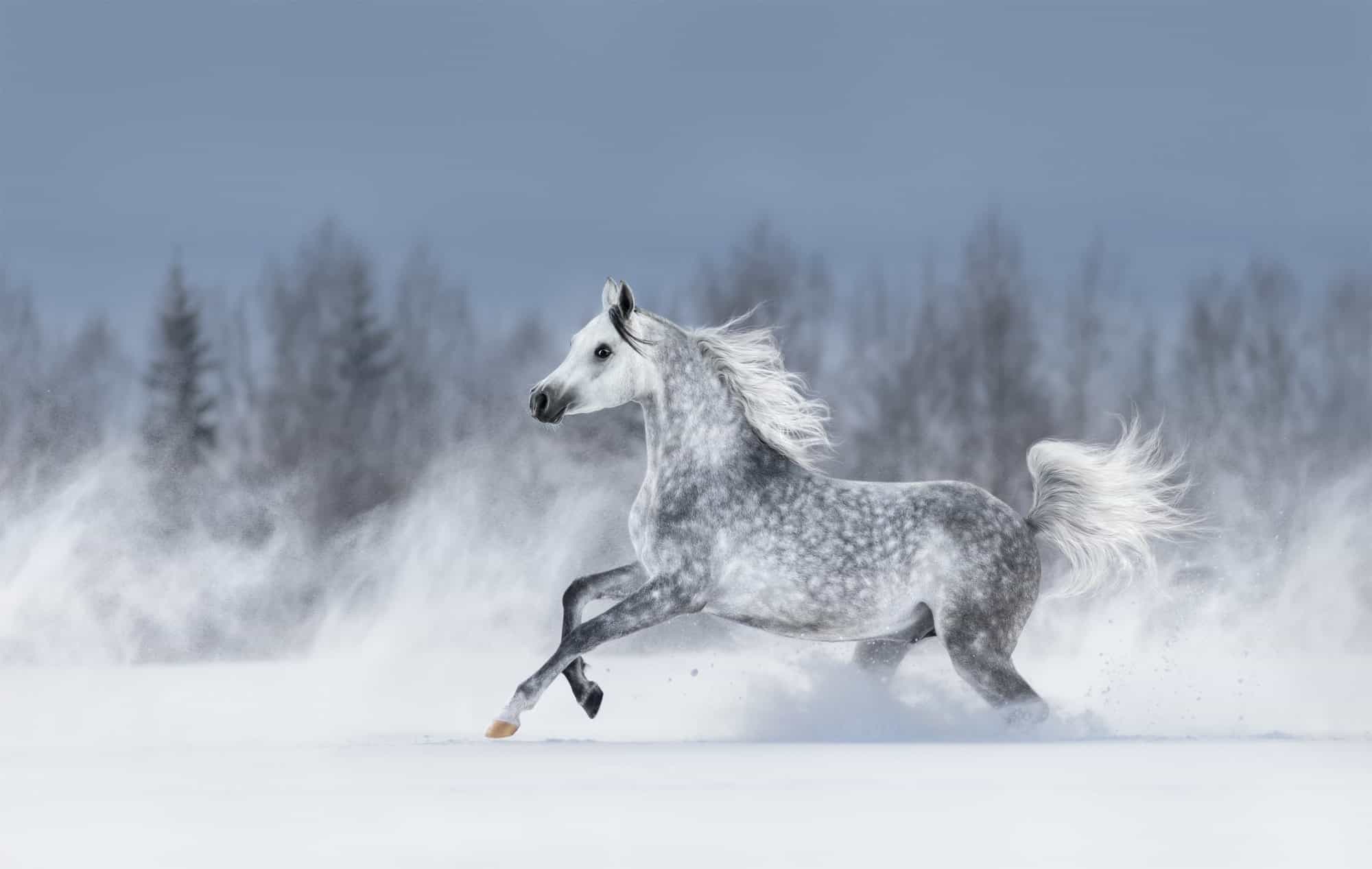
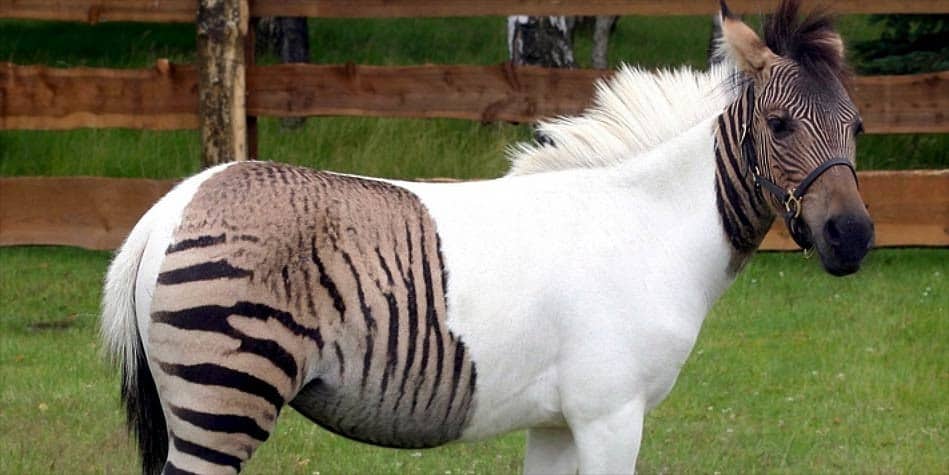
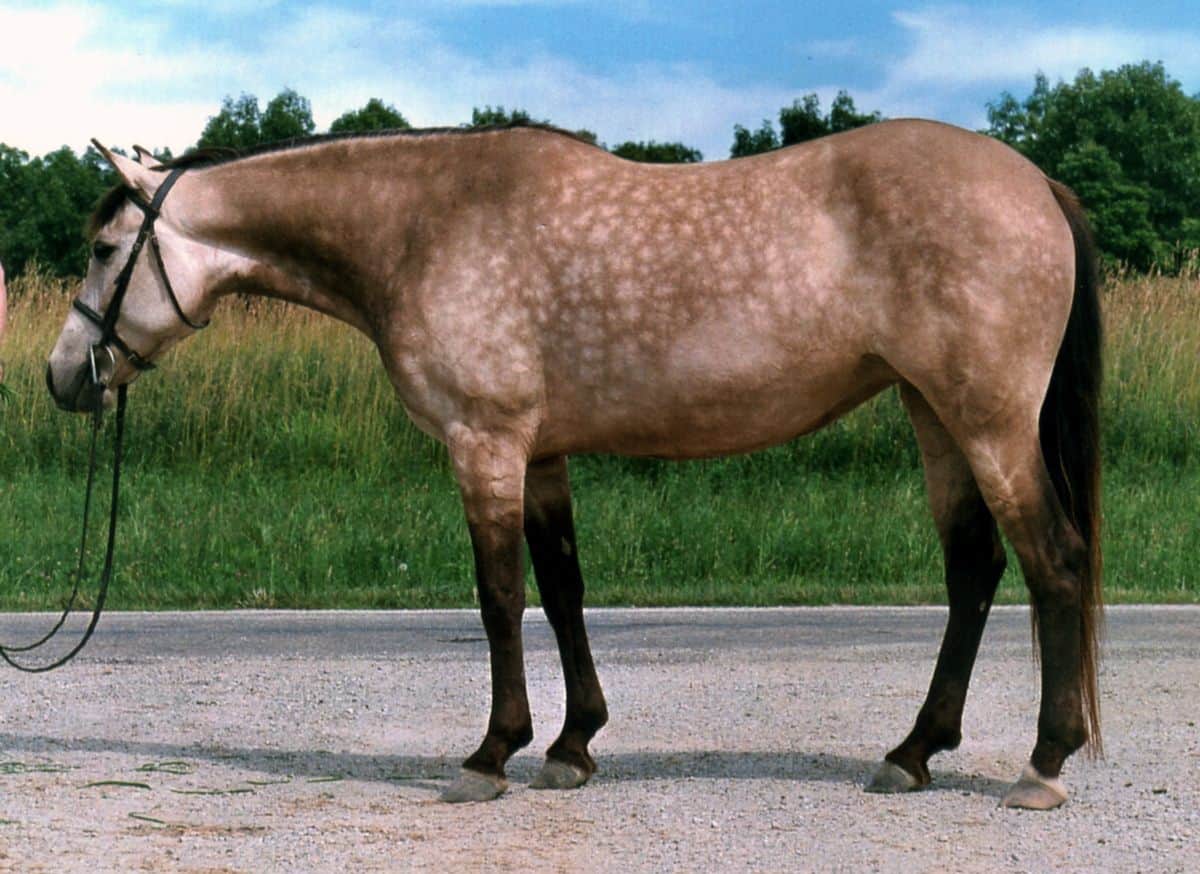
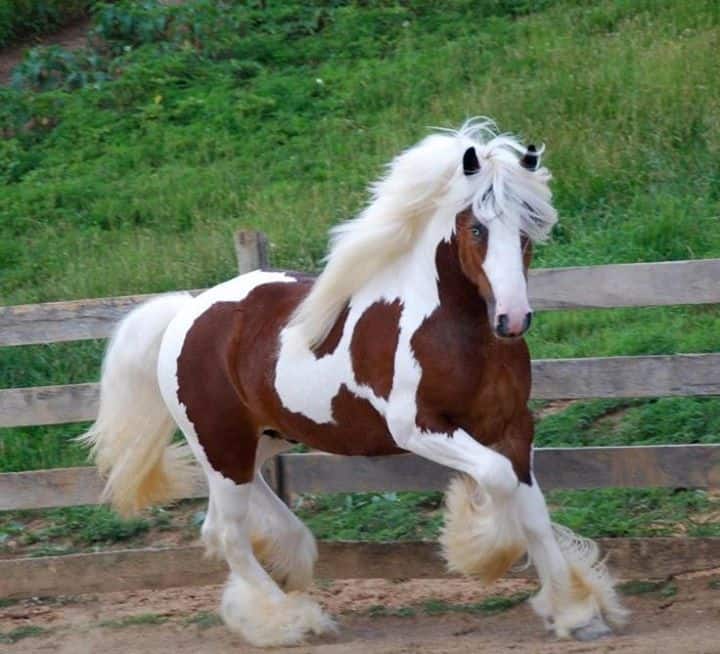
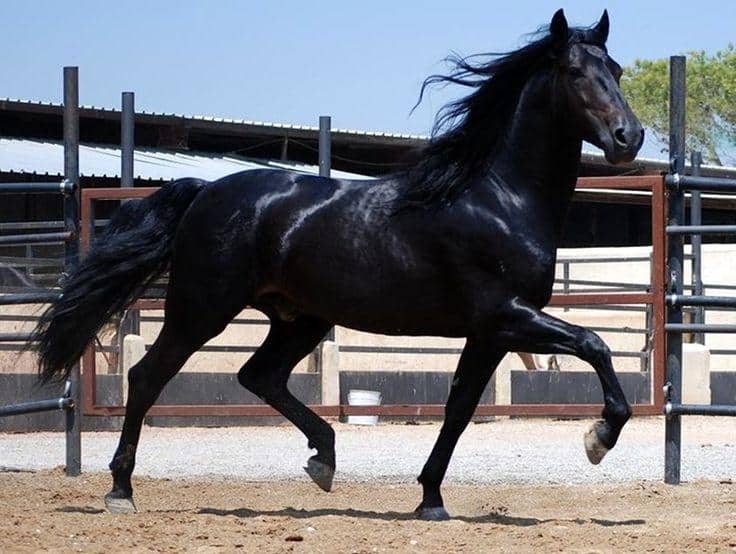








I want to adopt a horse for as cheap as possible which one is the cheapest?? Many thanks. I love black, grey and brown horses and ponies best!
I suggest a Tennessee Walking Horse. They can do many different types of walks and are very pretty horses. They also go for pretty cheap prices. Good luck!